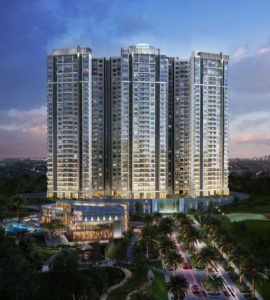Recession and economic stress rarely affects the prices of luxury realty across the world, and there are reports and surveys to prove that
Miami
It is a given: luxury realty, globally, is immune to downturn. In Mumbai, luxury realty may be facing tough times because many buyers believe property in the city is overpriced and don’t offer value for money. But that is not the case across the world.
In Bengaluru, for instance, luxury sells even in tough times. With a growing number of High Networth Individuals from the ever booming IT and start up space, ultra luxury homes seems like the right fix for these freshly minted millionaires. According to a PropEquity report, Bangalore has taken over from Mumbai as far as new luxury launches are concerned. A total of 4,155 units were launched between 2008 and 2016. Of these, 3,310 have already been booked. “In Bengaluru, even the most expensive luxury home will cost $6.2 million, which is far less when compared to luxury homes in Mumbai or Delhi,” says Nirav Ashna, MD of luxury consulting firm, Bengaluru Modern.
So profitable is India’s luxury realty segment that even Donald Trump, the American presidential hopeful is looking at investing in Indian realty. His son and Trump Organization’s Executive Vice-President Donald Trump Jr has said that the brand has never been stronger in terms of work and expansion plans in India. The Trump Organization already has two projects under construction in Pune and Mumbai, and they are looking at the north and east of the country. “The Trump Organization is extremely bullish on India. The plan is to build a pan-India development business for Trump branded residential and office projects,” Kalpesh Mehta, managing partner at Tribeca Developers said. Tribeca Developers is Trump Organization’s exclusive representative in India and it is responsible for supporting the brand in all aspects of building business here. In the National Capital Region, too, 368 apartments costing between $6 million and $59 million were sold between January and August 2016.

Beautiful modern house with garden, Bangalore
Old money has always been investing in luxury properties: Shiv Nadar chairman of tech-giant HCL is understood to have bought a luxury bungalow in South Delhi. Nimesh Kampani, chairman of financial services firm JM Financial is said to have bought an apartment in upcoming Signature Island in Bandra Kurla Complex, said to be the fanciest luxury property in India.
But the sale of ubèr-luxury residences is also driven by the $12 billion e-commerce and mobile phone industry which is churning out many millionaires. Indeed, buying luxury apartments is no longer the sole domain of people with “old money”, says Mudassir Zaidi, national director, Knight Frank India. “Apart from promoters who have made money in IT, financial services and pharmaceuticals, CEO-level professionals and even lawyers are the new buyers of luxury real estate,” Zaidi points out. As per a KPMG report, “Luxury is the fastest growing segment in residential housing. Between 2008 and 2012, about 182 luxury projects housing 25,570 units with a value of $30 billion were launched in top seven cities. Many were absorbed, fueled by strong growth in the number of high net worth individuals.”
Marbella, Nevado Real Estate
Even internationally, luxury realty attracts big ticket price. Recently we read a report about John Cusack putting up his Spanish-style beach house along a sandy stretch of sand in Malibu for $13.5 million. Located in an affluent beach city in Los Angeles County, California, the property was purchased by the 49-year-old American actor, producer and screenwriter in 1999 for $2.1 million. The walled, gated property features a trellis-shaded courtyard and is home to three bedrooms and three and a half bathrooms. It also boasts a double-height living room with fireplace and an open kitchen.
Christie’s Realty, an army of the global auction house, Christie’s, claims that global prime property market experienced solid growth in a number of $1 million-plus home sales in 2016, as many of the world’s most affluent recognized the intrinsic value of owning prime property, be it for the safe storage of wealth, a lifestyle upgrade, or as a “passion” investment. Averaging across six luxury sub-markets surveyed by Christie’s International Real Estate white paper, luxury home sales jumped 16 percent over 2013, with resort markets leading the upsurge in high-value sales across sectors.
According to the 2015 Prime Global Cities Index, released by the London-based real estate consultancy Knight Frank, luxury properties are on average 46 percent more expensive globally than they were back in the second quarter of 2009, when the index hit its lowest point of the Great Recession.
The company defined “luxury” in several different ways, according to Jonathan Miller of the New York-based Miller Samuel Appraisers and Consultants, who provided data for Manhattan, Miami and Los Angeles. He believes luxury is best measured by looking at the top 10 percent of transactions during a given period. But for Tokyo and other select markets on this list, he said, Knight Frank used different measurement strategies that were better suited to the individual areas.
The top 10 international markets for luxury price growth show relatively strong geographic diversity, with North America, Asia, Europe and Australia all making appearances. However, North American markets steal the show. San Francisco, Miami and Vancouver were all in the top five, earning double-digit percentages of price growth year-over-year. California actually made the list twice. San Francisco, largely due to its booming tech industry, came in at No. 1 with price growth over 14 percent. Los Angeles earned the No. 9 spot and was tied with Dublin for price growth at 8 percent. Knight Frank compared these trends with the findings from its annual Wealth Report and drew a few conclusions about what might affect global luxury real estate markets in the next year.
Spain’s sun-kissed Valencia region is also seeing an uptick in sales. Buyers are finding high-quality properties in privileged locations at very competitive prices, which create a growth in buyer interest, especially those from overseas who pay in cash.
Rajajinagar Apartments Overview, Bangalore
Luxury buyers are likely to make future purchase decisions, according to the company, by balancing what they perceive is the globalization of markets (based on factors like wealth creation and improved connectivity) with how they perceive the markets’ protectionism (based on factors like foreign buyer restrictions and capital controls). That means buyers will be looking for high-end, cosmopolitan locales that won’t restrict their purchase power.
Naturally, a city’s local job market plays a big role in its globalization and real estate growth. When urban job markets change and grow, their housing markets change and grow, too. Knight Frank recently addressed the potential impact of what it calls emerging global cities on the economy, large markets where creative, knowledge-based workforces are spurring demand.
Right now, the global economy is starting to favor places where creative knowledge workers, rather than industrial ones, are gathering in droves – places like San Francisco and Sydney, Australia, which experienced over 7 percent housing price growth this year. “San Francisco in particular has benefited from the tech boom in a very extreme way,” Miller said. “It has some of the highest purchase prices in the country on this index.”
Very clearly, there are some sectors that never face a downturn, and luxury realty is one of those.





